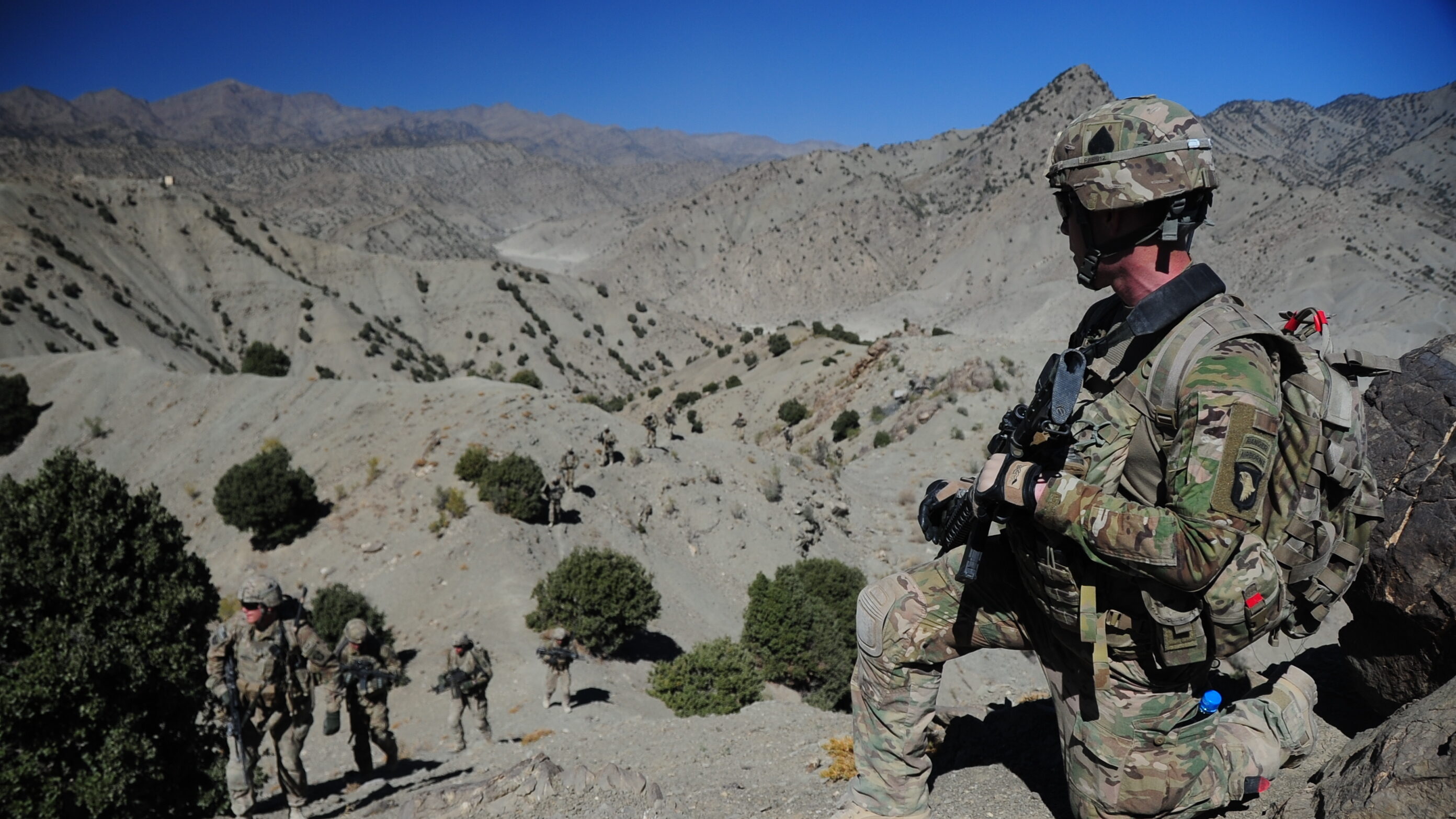
Pfc. Travis McGehee, an infantryman with 1st Platoon, 1st Battalion, 506th Infantry Regiment “Red Currahee,” 4th Brigade Combat Team, 101st Airborne Division (Air Assault), watches as his fellow Currahees walk up a mountain trail on a joint patrol with the Afghan National Army. (U.S. Army photo by Staff Sgt. Todd A. Christopherson, 4th Brigade Combat Team Public Affairs)
WASHINGTON: As the Army pursues different technologies to provide its soldiers with precise navigation in far-flung environments where GPS is either blocked by adversaries or just not available, one office is working to make sure those technologies, whatever they may be, can work together.
Scientists at the Army’s C5ISR Center are developing what they call pntOS, software built with an open architecture designed to allow new PNT — positioning, timing and navigation — sensors to be added in or taken out at will.
“Traditionally, sensor fusion solutions are very tightly coupled. The software is very tightly integrated together,” said Mike Caporellie, branch chief of PNT emerging technologies at the C5ISR Center. “So we want to do is provide a modular way of doing that, which provides the ability to be adaptable, reconfigurable, and lets us insert new technology when it becomes available. If a new widget or sensor becomes available that provides a PNT data source we can quickly integrate that into our stuff.”
RELATED: Army Envisions Global 3D Terrain Map As Future PNT Aid For Operations
What pntOS is at its core is an application programming interface, a software intermediary that can connect disparate programs or applications to allow them to “talk” to each other if they don’t speak the same language. Application programming interfaces are centerfold to the larger Department of Defense’s move toward Joint All-Domain Command and Control, in which disparate systems regardless of the warfighting domain will have to pass data to each other.
pntOS is a software specification that developers would build their PNT applications to in order to be in compliance. The C5ISR Center has developed a reference code that complies with the pntOS software specification as an example for developers.
“What this allows us to do is reduce integration time [in] adding that new capability, and ultimately, the goal is to get technology and capability out to the warfighter faster,” Caporellie said.
The pntOS solution is expected to be mature enough for others to use by the end of the calendar year, which equates to technology readiness level seven. The C5ISR Center could not name the transition partner, citing operational security. In the future, the specification could be included as a requirement in future contract documents.
Related: Sandia’s Atomic ‘Avocado’ Could Allow GPS-Free PNT
pntOS is another example of how the military wants to use open standards in the development of software and hardware in the future. For decades, the military has developed or purchased systems that can’t connect with other platforms because of how they were built. On the Army side, the C5ISR Center has been a key player in working with service components, industry and academia in developing open systems — particularly with the service’s work on modernizing its tactical network.
The C5ISR Center has also worked on the C5ISR/EW Modular Open Suite of Standards, a hardware box into which soldiers can insert cards with networking capabilities, allowing for the rapid integration of cutting edge technologies if they’re built to a common standard called CMOSS.
Late last year, the Army asked industry for A-PNT solutions for CMOSS, as reported by Inside Defense. For the pntOS team, it’s a similar goal, but with a specific capability in mind.
“This allows easier transition of technology between the government, industry and academia,” Caporellie said. “It helps smooth that transition of technology between all of them and get after that rapid technology integration development. It’s really geared towards any one that wants to build a PNT application.”
Sullivan says Ukraine supplemental should cover all of 2024, long-range ATACMS now in Ukraine
“We now have a significant number of ATACMS coming off their production line and entering US stocks,” Jake Sullivan said today. “And as a result, we can move forward with providing the ATACMS while also sustaining the readiness of the US armed forces.”


























